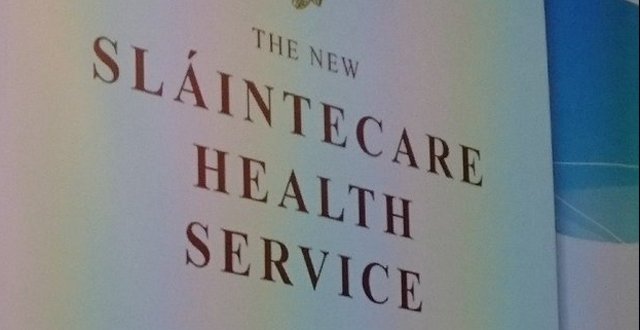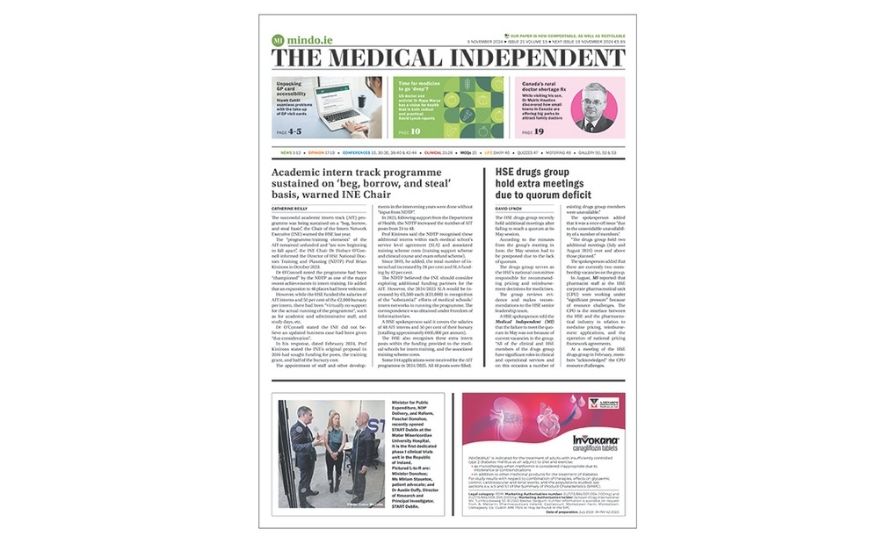The Government’s Sláintecare plan contains no big leaps, just technical tweaks
In July, a radical change was introduced to restructure how the HSE provides healthcare in Ireland. According to the plan, the health service will be reorganised under six regional authorities, each with a unified budget and more autonomy. This will allow decisions to be made in an integrated way and based on need, rather than historical budget allocations. If implemented correctly, this clearly marks a positive step forward for health and social care in Ireland. However, the unveiling of this plan is just another example of how the Government is focusing on the technical aspects of Sláintecare and shying away from some of the central parts of the plan to which they are ideologically opposed, most notably a universal, single-tier health service.
One of the recommendations from the original Sláintecare report was that “clear entitlements to universal health care be provided to all”, and one of the basic elements of this was the introduction of universal access to GP care within the first five years of the plan. The reason I describe this as basic is because Ireland is one of the only countries in Europe which does not provide universal free access to GP care. The Government might point to a reformed GP contract introducing GP visit cards for under-12s. However, GP visit cards for under-sixes were introduced in 2015 and the Government claims that access for under-12s won’t be fully introduced until 2022 at the earliest. If increments keep being introduced at this rate, then we’ll have to wait until 2085 until all age brackets are covered by the GP visit card. Only 63 years later than intended.
Another clear example of a policy central to Sláintecare being managed out of existence is the removal of private care from public hospitals. As the Trinity Health Policy team who assisted the cross-party committee with Sláintecare point out, private care in public hospitals ‘institutionalises inequity’, as it allows those who have private health insurance to skip the queue in a public hospital. Compounding this issue, public taxes subsidise private health insurance in a multitude of ways.
The original Sláintecare report, published over two years ago, recommended that “the provision of private care by consultants in public hospitals will be eliminated over five years’. In 2017, an independent review group was established to examine the removal of private practice from public hospitals. The de Buitléir report produced by this review group was provided to the Minister for Health several months ago and was only recently published. Leaks had been coming from the Government claiming that removal of private practice from public hospitals would take longer and be more expensive than expected. This seemed like another orchestrated campaign to ignore the ambitious plans the Sláintecare report had for equitable access to healthcare in Ireland and instead place the emphasis on technical shifts in the provision of healthcare in Ireland.
Despite this, the Government, and in particular the Minister for Health, have consistently made sounds about how they are committed to Sláintecare, and the fact that Sláintecare has a long list of targets means what they’re saying is partly true. However, when it comes to the tough decisions like increasing entitlements to healthcare and making provision of private care in public hospitals a thing of the past, the Government does not and never has had any interest. Their focus is on stymieing any momentum behind these issues.
If there’s any discussion at all about creating a single-tiered health service, then I’d imagine cabinet discussions are reminiscent of when there was talk amongst the Fianna Fáil-PD government about the introduction of a “common waiting list”, a mechanism to stop queue-jumping by those who own private health insurance. One senior person involved at the time described the situation as follows: “The PDs turned up and they went mental about it and started quoting the amount of people with private health insurance, what impact it would have on them.”
However, the reality is that it is unlikely that anyone at the cabinet table is pushing for Sláintecare’s vision of an equitable health system. Only four of the 14 members of the Sláintecare committee are Government TDs and only one of those TDs has a seat at the cabinet table; Josepha Madigan, Minister for Culture, Heritage and the Gaeltacht. So, despite the policy getting cross-party support, it doesn’t necessarily have strong Governmental support.
The original Sláintecare report was released in May 2017. Since then, we’ve gotten an ‘implementation strategy’ and an ‘action plan’ and the publication of the de Buitléir report. However, there have been very few increases in entitlements and almost no discussion about legislating for a right of access to healthcare. The Government’s priority is maintaining our inequitable system, whilst diverting attention by focusing on technical shifts.













Leave a Reply
You must be logged in to post a comment.